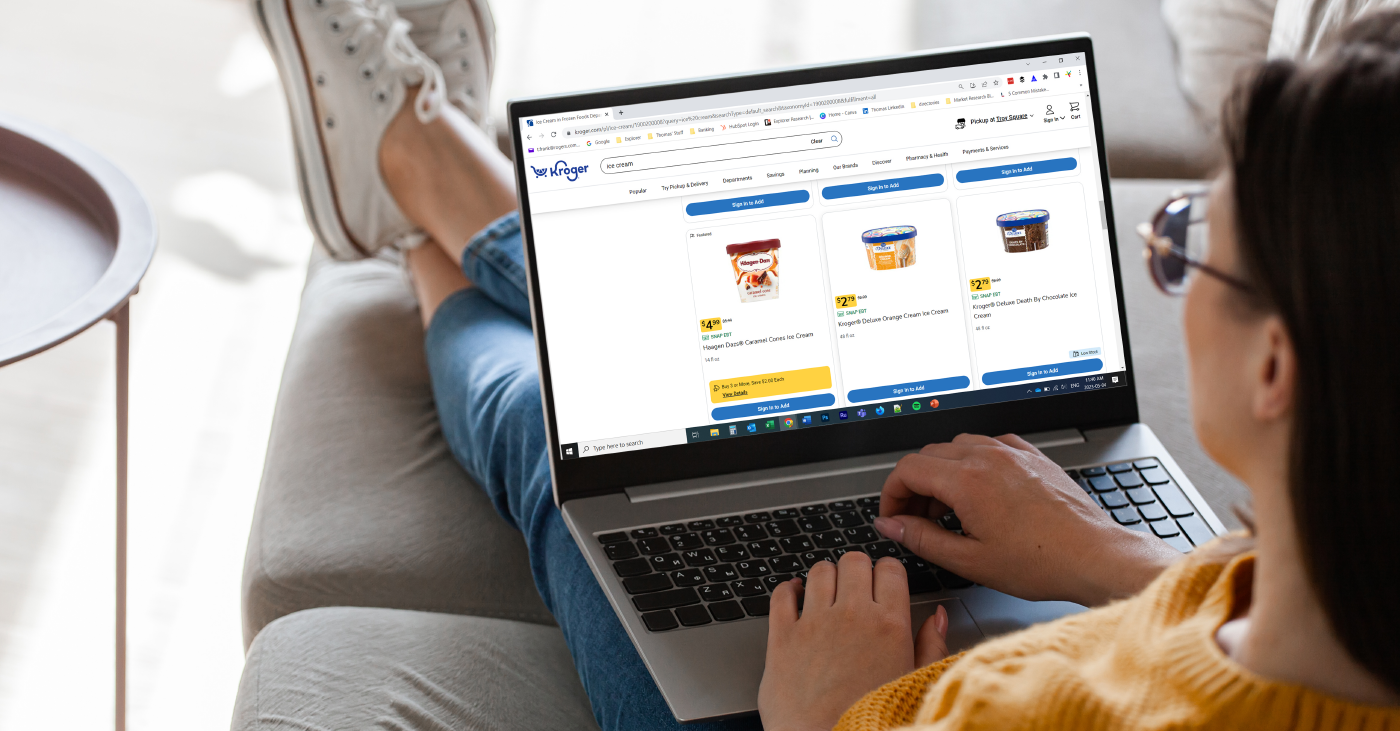Historically, trips have been classified based on the total basket; for instance, a ‘Stock Up’ type trip is classified as a large, planned trip to prepare for the coming week, containing 15+ items and a spend of $80+ with high price sensitivity (source: IRI). Whereas a ‘Quick Trip’ is often to just one department, contains less than 5 items, and a spend of <$40.
Years of shopper POS data have been analyzed to form these trip missions, and they continue to be the foundation of many shopper activation programs. At Explorer, we too have relied on these trip definitions to provide insight into the mindset of the shopper; however, we continued to observe that the shopper mindset within these trip missions was more nuanced.
Take this example:
Our shopper, let’s call her Lauren, is doing her weekly grocery shopping on the e-commerce website of a mass retailer. Lauren’s trip would traditionally be classified as a stock-up trip, as she’s buying more the 15 items and spending more than $80.
Like many shoppers these days, Lauren is trying to save money on groceries where she can – she would generally describe her mindset on this trip as ‘highly price sensitive’, she’s looked at circulars and often trading-off name brands for cheaper private label alternatives.
However, on this trip, Lauren is also stocking up on her favorite date night snack with her husband – premium ice cream. Every other week, Lauren and her husband have a date night and enjoy a new flavor of their favorite sweet treat – ice cream.
When shopping for this item, Lauren spends time filtering the ice cream results on the site, comparing flavors and ingredients, and sorting by ‘Newly Added’ to find inspiration for this week’s date. She’ll even look at reviews on TikTok while she’s shopping the site to get additional detail. Price is not a consideration for this category, and whether it’s a pint, a quart, or something larger, size is not important either, it’s all about the premium ingredients and flavor.
So, if we were selling ice cream on this e-commerce website, would we still recommend targeting Lauren with the blanket highly price-sensitive stock-up trip approach?
Explorer’s Shopper Activation Framework (SAF) was born out of countless examples of category motivators not matching the total trip definition. While there’s a lot of strength in the macro trip types, we needed to go deeper to provide more targeted, actionable, and reliable insights for our clients.
Going back to our example above, Shopper Activation would classify Lauren as a Quality Value Seeker (19% of shoppers), and the trip motivation for date night ice cream would be classified as an ‘Anytime Reward’ (22% of category trips). On that same trip, Lauren may also shop categories with a trip motivation of ‘Routine Replenishment’, and another category may be motivated by ‘Informed Splurge’. Knowing the trip motivations on a category level can help to more precisely target activation opportunities in-store or online, resulting in more effective conversion. In Lauren’s case, the website may want to consider adding filters to help shoppers identify new or premium flavors. As a manufacturer, sizing this motivation can help to inform thumbnail imagery and descriptions, the hierarchy of information on the product results page.
Our Shopper Activation Framework is based on an analysis of >30,000 shopping trips across brick-and-mortar and e-commerce retailers. It’s the next level of trip segmentation, using a framework, quantifying years of shopper theory, that helps you better target shopper and trip opportunities. It links behaviors with motivations to optimize activation opportunities at both a strategic and tactical level and can prioritize brand, category, and channel opportunities, based on size of prize.
If you’re interested in a complimentary snapshot of your category or how your banner compares to your competitors, contact us and we’d be happy to take you through how SAF could benefit your business.
